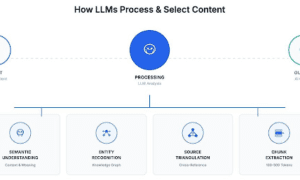Effective inventory management is the cornerstone of successful business operations, ensuring that products are available when needed while minimizing costs. Among the myriad of strategies employed to maintain inventory accuracy, cycle counting stands out as a crucial technique. This in-depth guide explores the intricacies of cycle counting, highlighting its importance, procedures, advantages, and the role of technology, particularly mobile ERP solutions, in amplifying its impact.
Understanding Cycle Counting
Cycle counting is an inventory auditing procedure that involves counting a subset of inventory items on a regular basis within a specific time period. Unlike traditional annual physical inventories, cycle counting spreads the workload throughout the year, providing continuous updates on inventory accuracy and allowing for timely corrective actions.
The Importance of Cycle Counting
- Enhanced Accuracy: Regularly scheduled counts help identify discrepancies between physical inventory and recorded inventory levels. By addressing these discrepancies promptly, businesses can maintain higher levels of inventory accuracy.
- Operational Efficiency: Accurate inventory records streamline operations by ensuring that the right products are available when needed. This reduces the time spent searching for items, improves order fulfillment rates, and enhances overall customer satisfaction.
- Cost Minimization: Accurate inventory records help prevent overstocking and stockouts. Overstocking ties up capital and incurs storage costs, while stockouts can lead to lost sales and dissatisfied customers. Cycle counting helps strike the right balance, optimizing inventory levels and reducing associated costs.
Procedures for Effective Cycle Counting
Implementing an effective cycle counting program involves several key steps:
- Segmentation and Prioritization: Inventory items are segmented into categories based on their value, usage, or criticality. High-value or high-usage items are counted more frequently than low-value or low-usage items. This prioritization ensures that resources are focused on items that have the most significant impact on operations.
- Establishing a Schedule: A regular schedule for cycle counts is established, specifying which items will be counted and when. This schedule should be flexible enough to accommodate operational demands while ensuring that all items are counted periodically.
- Training and Communication: Employees involved in cycle counting should be adequately trained on counting procedures, data recording, and error identification. Clear communication channels must be established to report and address discrepancies promptly.
- Data Recording and Analysis: Accurate data recording is essential for effective cycle counting. Modern inventory management systems, particularly those integrated with mobile ERP solutions, facilitate real-time data entry and analysis. This enables quick identification of discrepancies and corrective actions.
Advantages of Cycle Counting
Cycle counting offers several advantages over traditional inventory management techniques:
- Continuous Improvement: By providing regular updates on inventory accuracy, cycle counting fosters a culture of continuous improvement. Businesses can identify and address root causes of discrepancies, leading to more accurate inventory records over time.
- Reduced Disruptions: Unlike annual physical inventories that often require shutting down operations, cycle counting can be performed during regular business hours with minimal disruptions. This ensures that operations continue smoothly while maintaining inventory accuracy.
- Proactive Issue Resolution: Regular counts enable businesses to identify and resolve issues before they escalate. This proactive approach prevents small discrepancies from becoming significant problems that could impact operations and customer satisfaction.
The Role of Technology in Cycle Counting
Advancements in technology, particularly mobile ERP solutions, have revolutionized cycle counting processes. These solutions offer several benefits:
- Real-Time Data Entry: Mobile ERP solutions enable employees to enter data directly into the system using mobile devices. This eliminates the need for manual data entry, reducing the risk of errors and ensuring that inventory records are updated in real-time.
- Improved Accuracy: Mobile devices equipped with barcode scanners or RFID readers enhance the accuracy of counts by automating data capture. This reduces the likelihood of human errors and ensures precise inventory records.
- Data Analytics: Integrated analytics tools provide valuable insights into inventory trends, discrepancies, and root causes of errors. This data-driven approach enables businesses to make informed decisions and implement corrective actions effectively.
- Enhanced Visibility: Mobile ERP solutions offer real-time visibility into inventory levels, locations, and movements. This visibility improves coordination across different departments and enhances overall inventory management.
Implementing Mobile ERP Solutions for Cycle Counting
Implementing mobile ERP solutions for cycle counting involves several key steps:
- System Selection: Choose a mobile ERP solution that aligns with your business needs and integrates seamlessly with your existing inventory management systems.
- Employee Training: Provide comprehensive training to employees on using mobile devices, data entry procedures, and the overall cycle counting process. Ensure that employees are comfortable with the technology and understand its benefits.
- Pilot Testing: Conduct pilot tests to identify potential challenges and refine the implementation process. Use feedback from pilot tests to make necessary adjustments before full-scale deployment.
- Full Deployment: Roll out the mobile ERP solution across all relevant departments and locations. Monitor the implementation process closely and provide ongoing support to address any issues that arise.
- Continuous Improvement: Regularly review the effectiveness of the mobile ERP solution and make necessary adjustments to optimize performance. Encourage employees to provide feedback and suggest improvements.
Conclusion
Cycle counting is a vital component of effective inventory management, enhancing accuracy, operational efficiency, and cost minimization. By adopting a systematic approach to cycle counting and leveraging the power of technology, particularly mobile ERP solutions, businesses can achieve significant improvements in inventory control. This, in turn, leads to enhanced operational success, customer satisfaction, and overall business performance. Embracing cycle counting as a continuous, proactive process is key to maintaining accurate inventory records and optimizing inventory management strategies.



































